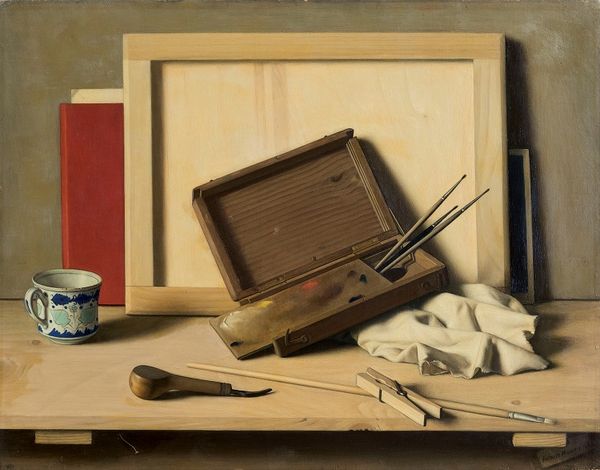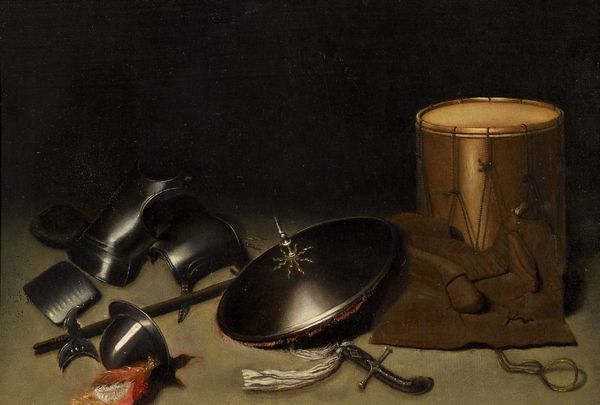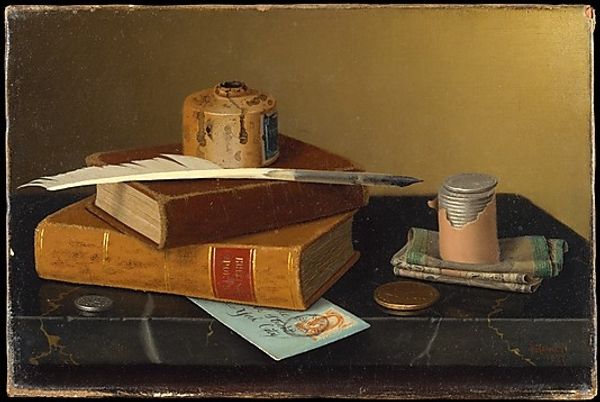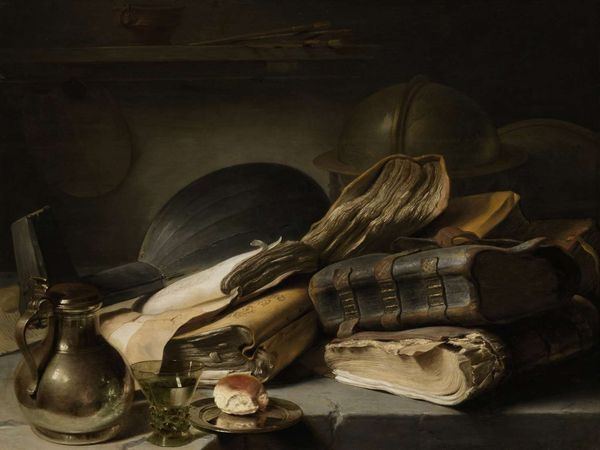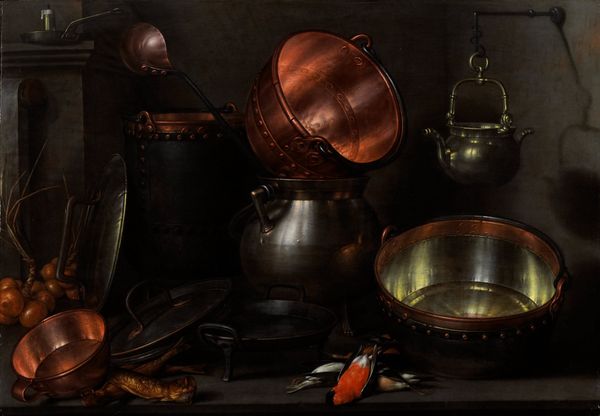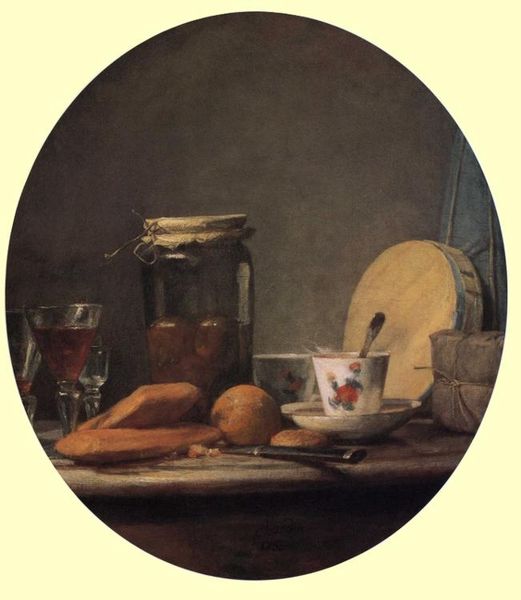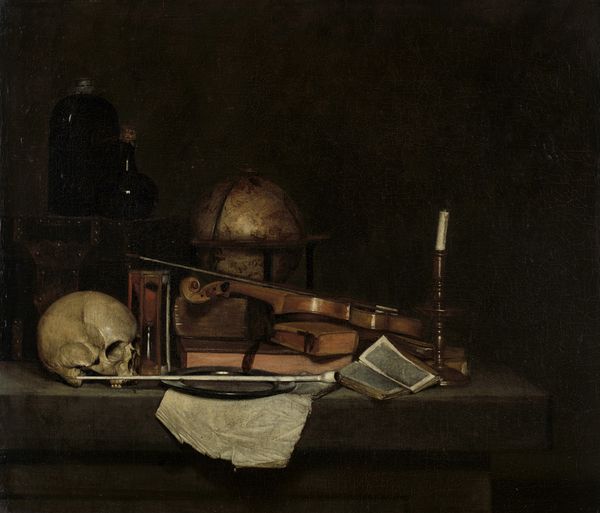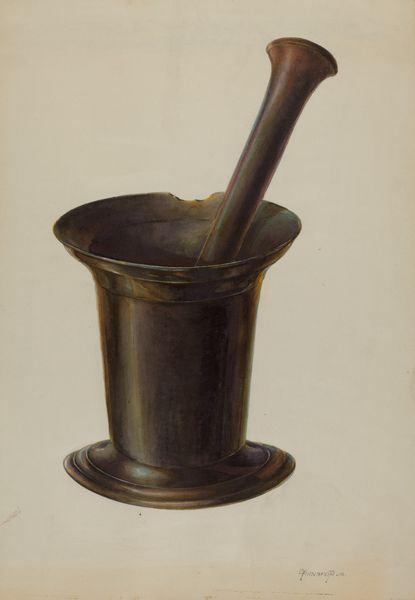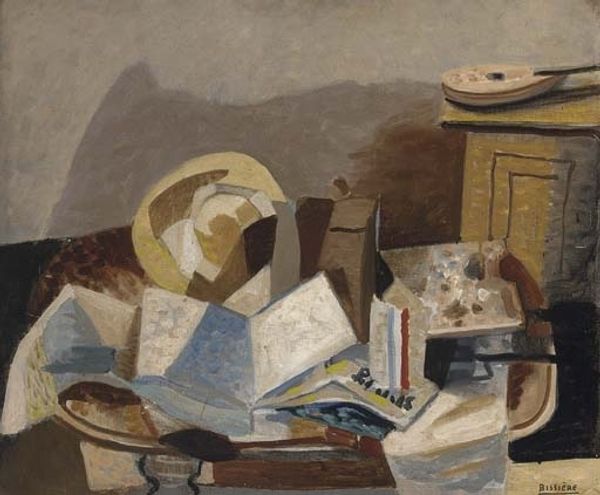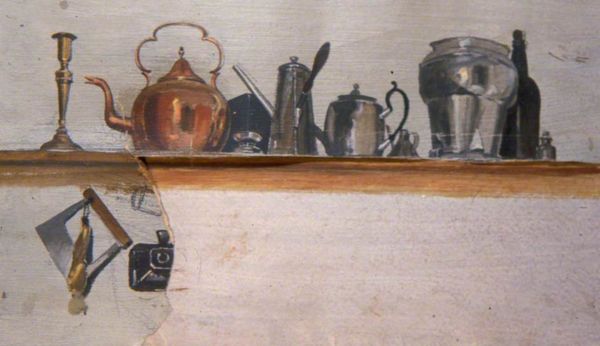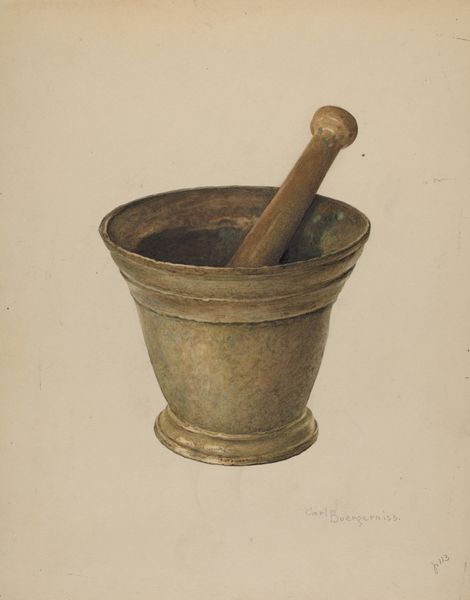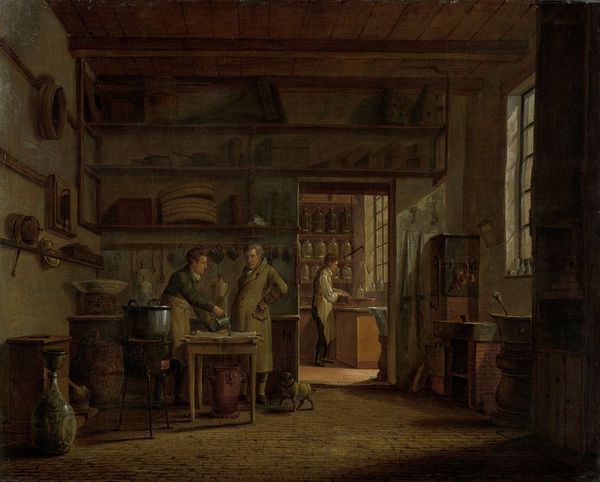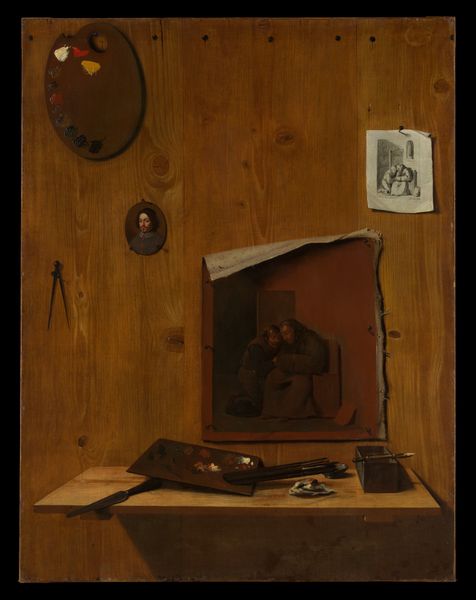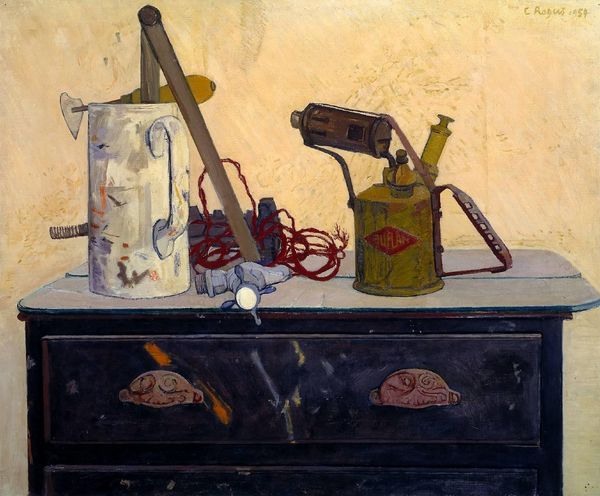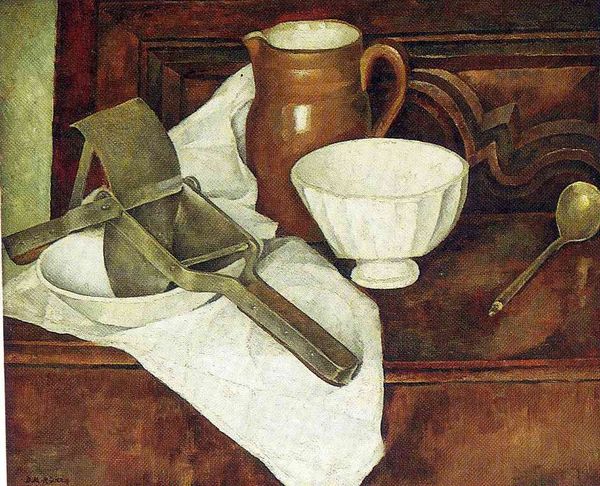
oil-paint
#
oil-paint
#
oil painting
#
united-states
#
realism
Dimensions: 11 5/8 × 15 11/16 in. (29.53 × 39.85 cm) (sight)18 1/2 × 22 1/2 × 2 1/2 in. (46.99 × 57.15 × 6.35 cm) (outer frame)
Copyright: Public Domain
William Michael Harnett painted "Still-life with Flute and Times" in the late 19th century, a period marked by rapid industrialization and shifting social structures. Harnett, working in this era, created an illusionistic painting that captures the quiet essence of middle-class life. The work depicts a collection of everyday objects: a stoneware mug, a newspaper, a flute, and smoking accessories. These items aren't merely objects; they are symbols of leisure and intellectual life, hinting at the cultural values of the time. The presence of "The Times" newspaper situates the painting within a specific historical and political context, suggesting an engagement with current events and public discourse. Harnett's meticulous attention to detail, his ability to capture the textures and surfaces of these objects, invites viewers to reflect on the beauty and significance of the mundane. Does this still-life romanticize or critique the era's values? It offers a glimpse into the personal and societal dimensions of a bygone era, sparking questions about how we construct meaning through the objects we surround ourselves with.
Comments
No comments
Be the first to comment and join the conversation on the ultimate creative platform.
